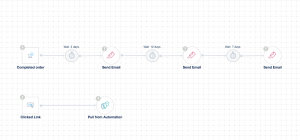— January 12, 2018

EContti / Pixabay
How many times do you plan a communication to your sales (or any other) team, deliver that communication, then realize that it had a very different effect from that which you intended? Sure, you said everything correctly, but your team just didn’t get it and the impact was lost.
Or perhaps one of your sales executives was communicating with a potential customer – they thought through the customer’s needs, developed the perfect solution, but when they delivered the message, the customer didn’t see it in the same way that the sales executive did. You knew the solution was perfect for this customer, at the right price, but again, the customer just didn’t get it.
These are common problems, which even the best salespeople and sales leaders can struggle with, but one which is hard to address unless you know the cause. Which brings me onto one of my favorite lessons in communication skills:
Communication isn’t the message which leaves your lips, but the one which arrives in the receiver’s understanding
You see, between the sender and the receiver are many invisible filters which change and distort the message, just like a game of Chinese Whispers. Each filter the message passes through adds or subtracts something from the content, the meaning or the tone in which the communication was meant.
What do I mean by “filters”? I mean those things which make up our personalities, and have a bearing on the way we communicate. Filters can be created by someone’s education, culture, mood, experience, gender, personality, preferred communication style and many other aspects which make someone who they are. And remember, that in communication, there are actually two sets of filters: one for the sender of the message, and one for the receiver.
Let’s look at an example of this. Imagine that as a sales leader, I want to communicate to my team that we’ve had a good quarter. I also want to particularly highlight the achievements of our new recruit, Sarah, who’s got up to speed very quickly indeed. I make an assumption that the new recruit might need some recognition early in her career, and that the more established team members don’t need it to the same degree. This assumption is created by my “experience” filter. I might deliver my message something like this:
“Well done, team, on a fantastic quarter. We’re really bucking the market trend at the moment and bringing in some impressive results. Particular thanks to Sarah, who’s only been here four months and is already selling as well as the rest of you – thanks Sarah for all your effort.”
Now I might expect a good reaction to this up-beat, congratulatory message. But let’s now think of Melissa, who’s doing quite well against her targets in a particularly difficult vertical market. She’s always been successful and is used to being praised for her efforts. She’s spent a lot of time this year helping Sarah to learn the ropes. She also had an argument with her boyfriend this morning and is not in the best of moods. How might Sarah receive this message? Her brain might understand something like this:
“Well done, Sarah, on doing such a great job in helping the team towards success this quarter. You’ve managed to beat market forces all on your own to be the best salesperson in the team – how did you manage that? It’s incredible! The rest of you are doing OK too, except Melissa. What’s going on, Melissa? Have you let your standards slip? Go and start selling and stop wasting your time on other things!”
OK, so perhaps that’s a little exaggerated, but you get the idea.
In order to minimize the effects of these filters on our communications, we need to be as clear as possible, and as structured as possible so that regardless of someone’s mood, personal circumstances, native language or any other aspect of their individuality, they receive the message according to the sender’s intentions. Let’s look at how we might structure that message. We need to ensure that our message is always in the right AREA. This is an easy-to-remember acronym to guide your structure:
Attention: Get the listener’s attention. This needs to be a high-impact statement which appeals to their emotions, a pertinent topic, a critical business need or other such attention-grabbing subject. The idea is that they stop what they’re doing or put their current train of thought to one side, in order to give their undivided attention to you. This enables you to maximize the amount of content which gets through their filters, and keeps them focused on the rest of your message.
“Team, we are having a fantastic quarter! We’re bucking the market trends with a really strong run of sales results in a difficult economy.”
Relevance: So you’ve got the other person’s attention. Now you need to make this attention-grabbing statement relevant to them personally in order to keep their attention and make them realize they should listen to the full message.
“Every single person has contributed to this success through great team-work and a really driven attitude towards success, and I’d like to take a few minutes to highlight some star performances.”
Evidence: Why is evidence of this important? Because it stops the praise (or criticism!) sounding hollow and worthless, and it forces the sender of the message to pick out specific areas to highlight.
“Let’s start by congratulating Sarah on having made a fantastic start to her career here – well done, Sarah! And of course, this wouldn’t have been possible without Melissa’s input. Melissa’s got a tough vertical market and spent a lot of time helping Sarah to fit in, but despite this she’s putting in a really solid performance – thanks, Melissa, for helping others as well. Which brings us onto Jim, who’s…” You get the idea.
Action: If your communication doesn’t end with an action, I’d urge you to consider whether the message is really necessary. That action could be quite specific, like “please do some more research into the stakeholders on this project and give me a report by next Tuesday” or something more based on comprehension, such as “please re-read this email and come back to me with anything which isn’t clear” which could go at the end of pretty much any message.
“Please take these good results as a real boost to you all as a team and to each person as individuals. Please continue trying to improve and help the company to stay ahead of the competition. Thanks again for your efforts.”
Sure, the content is slightly different in this example to the original message, but that’s part of the usefulness of an AREA communication – it means that the sender of the information takes more time to plan the message, and avoids any faux-pas which they’d otherwise have made.
We can use this structure in all types of communications, whether that’s sales, leadership, a catch-up with the boss or a presentation. It also works in both spoken and written media. The key is, that structuring your message in such a way helps to ensure it’s understood clearly, and as close to the original intention as possible.
Business & Finance Articles on Business 2 Community
(55)








